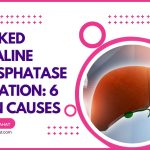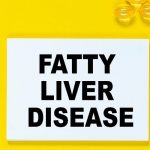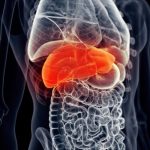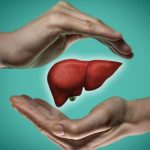Does High ALT & AST Mean Cancer? 6 Facts from research.
Our content is not intended nor recommended as a substitute for medical advice by your doctor. Use for informational purposes only.
Many cancers can cause elevated ALT and AST, such as liver and biliary cancers. Also, any cancer that spreads to the liver or bones causes such a condition. However, Cancers are overall a rare cause of elevated ALT and AST.
Key Facts:
- Elevate ALT and AST levels are common findings during screening.
- Cancers (such as liver, bone, and others) may cause elevated ALT and AST levels.
- However, elevated liver enzymes are not a specific marker for cancer.
- The most common cause of the accidental discovery of elevated ALT and AST levels is Non-alcoholic fatty liver disease.
- Other common causes include alcohol, medications, chronic viral hepatitis, liver cirrhosis, and herbal supplements.
- Cancers are a rare cause of high ALT and AST levels. Therefore, you have to consider common causes first.
- Liver cancer is considered a cause of high ALT and AST only when multiple risk factors such as liver cirrhosis, hepatitis B virus infection, etc.
1 . High ALT and AST are screening tests for liver inflammation.
To understand the connection between liver enzymes and cancer, we must simplify some basics about liver enzymes (ALT and AST).
ALT and AST are two of the most common laboratory tests used to assess the liver condition. Therefore, we (doctors) routinely check ALT and AST when we need to assess liver health.
Here are some basic facts about ALT & AST levels:
- ALT and AST are found inside the cells of the liver and other organs such as skeletal muscles, heart muscles, and bones.
- When there is damage in the tissues of the liver (or other organs), These enzymes are released from the cells and reach the bloodstream.
- So, An elevation of ALT and AST levels often indicates cell damage somewhere inside your body.
- Cancers of the liver, bones, and muscles can cause elevated ALT and AST levels, but this doesn’t mean that every elevation means cancer.
- We don’t use ALT or AST in separation to assess you. Instead, we use the ratio between them (ALT/AST ratio) to give us a bigger picture.
- Also, we use other combinations of laboratory tests to help us localize the cause of elevated ALT and AST.
Examples to help you understand:
- In liver inflammation, ALT elevation is much higher than the elevation in AST.
- Liver disease V.S. Bile duct disease: We use Alkaline Phosphatase (ALP) test. It is often elevated in bile duct diseases (Such as bile duct obstruction by a gallstone).
- In muscle diseases: we use a test called creatinine kinase (CK). CK is elevated when the elevations are in ALT and AST are due to muscle disease (myopathy).
Please note that the normal range of ALT and AST levels range by age and gender. The table below summarizes the common reference ranges (reference):
| Gender | Age range (years) | ALT levels (U/L) |
| Females. | 0-11 | <29 |
| 12-17 | <25 | |
| 18 or more | <33 | |
| Males. | 0-11 | <30 |
| 12-17 | <31 | |
| 18 or more. | <45 |
2. Cancer is not among the common causes of High ALT and AST.
Don’t jump to conclusions when your ALT and AST are elevated. In more than 99% of the cases, the elevation in these liver transaminases is not cancer-related.
The most common causes of elevated liver enzymes to consider first include:
- Nonalcoholic fatty liver disease (NAFLD), especially when inflammation (steatohepatitis or NASH).
NAFLD is the most common cause of elevated liver enzymes; It affects about 30% of the population (reference). - Alcoholic hepatitis.
- Drugs (more than 1000 drugs can alter the liver function and cause mild elevations in ALT and AST).
For example, Lipid-lowering drugs (statins) and nonsteroidal anti-inflammatory drugs. - Herbal & vitamin supplements such as iron, vitamin A overdose, chaparral, comfrey tea, etc.
- Viral infections such as Hepatitis A, B, or C.
- Bile duct diseases include biliary obstruction by a stone or biliary inflammation (cholangitis).
- Hemochromatosis (A common genetic condition characterized by elevated body iron levels and liver inflammation).
- Autoimmune hepatitis (especially in females).
- Less common causes include cancers, celiac disease, thyroid disease, primary sclerosing cholangitis, primary biliary cirrhosis, liver ischemia, and others.
3. Cancer can cause elevated ALT and AST levels.
Many cancers can cause elevated ALT and AST, such as liver and biliary cancers. Also, any cancer that spreads to the liver or bones causes such a condition. However, Cancers are overall a rare cause of elevated ALT and AST.
Pancreatic cancers can cause elevated liver enzymes by obstructing the bile outflow from the liver. For example, bilirubin, ALT, and AST are typically elevated when pancreatic cancer causes obstructive jaundice.
4. ALT and AST are not always elevated with liver cancer.
Elevated ALT and AST are frequently elevated in people with liver cancer (reference). However, The liver enzymes may be normal, especially in the early stages of liver cancer.
Because ALT and AST increase when there is liver cell damage, ALT and AST may remain normal during the early stages of liver cancers as the damage is minimal.
In conclusion, The levels of ALT and AST are not specific for liver cancer. Therefore, their elevation doesn’t mean you have cancer, and normal levels don’t exclude cancer.
5. ALT and AST elevation don’t always mean liver inflammation.
As we mentioned before, The liver is not the only source of high ALT and AST levels.
Non-hepatic diseases that cause increased ALT and AST levels. Common examples include:
- Celiac disease.
- Thyroid diseases.
- Hemolysis (the breakdown of red blood cells) as in patients with autoimmune hemolytic anemia and thalassemia.
- Muscle injury or diseases such as strenuous exercise Polymyositis.
- Myocardial infarction and heart failure.
- Anorexia nervosa.
In patients with cancers, The elevation of ALT and AST levels doesn’t always mean liver affection. Instead, high ALT and AST levels in people with cancers may indicate bone metastasis or muscle damage
.
Also, Chemotherapeutic drugs may cause elevated ALT and AST levels. Consult with your doctor or oncologist if you’re known to have cancer and have recently experienced elevations in your ALT and AST levels.
6. The Risks & warning signs of liver cancer (other than high ALT & AST).
Your doctor will not search for cancer due to elevated ALT and AST levels unless you have liver cancer risk factors and/or warning signs.
Examples of the common risk factors:
- Having liver cirrhosis (the most significant risk of primary liver cancer).
- Family history of liver cancer.
- Hepatitis B virus infection.
- Advanced Fatty liver disease.
- Having diabetes.
- Exposure to aflatoxins: a toxin produced by molds that grow on poorly stored crops such as grains and nuts.
- Excess alcohol consumption.
- Obesity.
Warning signs of liver cancer include:
Unfortunately, Early liver cancers can be completely asymptomatic. This is because liver cancer’s full signs and symptoms don’t appear until the tumor progresses.
Also, most of these signs and symptoms are non-specific and occurs with a wide variety of hepatic and non-hepatic disease.
So, we, like doctors, don’t rely on a single sign, risk factor, or lab test to suspect liver cancer. Instead, we rather consider all things together before we search for cancer.
Common warning signs of liver cancer include:
- Having liver cirrhosis or hepatitis B virus infection.
- Unintentional weight loss (losing weight without trying).
- Chronic loss of appetite and nausea.
- Pain in the liver area (the right upper quadrant).
- Abdominal swelling.
- Jaundice.
- General weakness and progressive fatigue.
- Clay-colored stool.
- Evidence-based
- Written by a doctor.

Related Posts:
- Does Acid Reflux Cause Headache? 6 Facts From Research.
- 7 Foods to Avoid With High Cholesterol (Doctor Explains)
- 17+ High-Fiber Lunch Ideas For IBS-Constipation
- 16+ Tasty High-Fiber Snack Ideas For Constipation
- 17 Easy High-Fiber Dinner Ideas For Constipation
- How Long does it Take to Reverse a Fatty Liver? (5 Facts).





